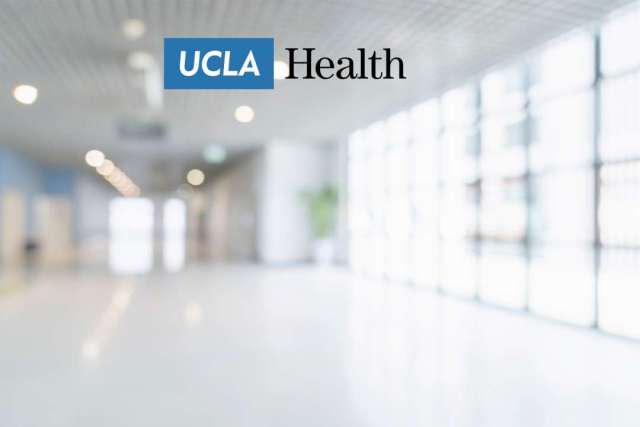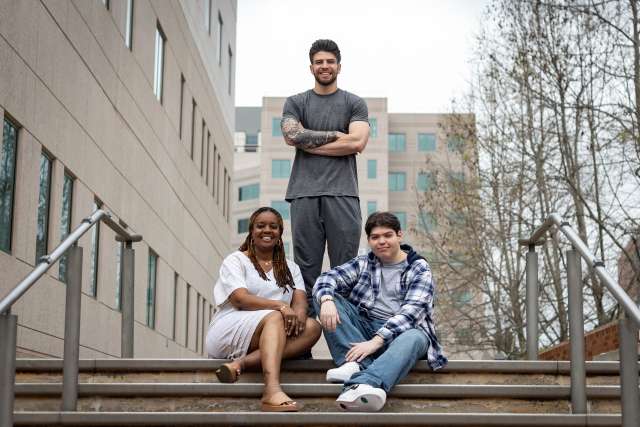Alzheimer's disease, Parkinson's disease, type II diabetes, the human version of mad cow disease and other degenerative diseases are more closely related at the molecular level than many scientists realized, an international team of chemists and molecular biologists reported April 29 in the online version of the journal Nature (print version to follow). Harmful rope-like structures known as amyloid fibrils, which are linked protein molecules that form in the brains of patients with these diseases, contain a stack of water-tight "molecular zippers," the scientists report. "We have shown that the fibrils have a common atomic-level structure," said David Eisenberg, director of the UCLADepartment of Energy Institute of Genomics and Proteomics, a Howard Hughes Medical Institute investigator and a member of the research team. "All of these diseases are similar at the molecular level; all of them have a dry steric zipper. With each disease, a different protein transforms into amyloid fibrils, but the proteins are very similar at the atomic level." The research, while still preliminary, could help scientists develop tools for diagnosing these diseases and, potentially, for treating them through "structure-based drug design," said Eisenberg, a UCLA professor of chemistry and molecular biology. The researchers, including scientists with the European Synchrotron Radiation Facility in Grenoble, France, report 11 new three-dimensional atomic protein structures, including those for both of the main proteins that form amyloid fibrils in Alzheimer's disease. "It has been a joy to see so many new structures," said Michael Sawaya, a research scientist with UCLA and the Howard Hughes Medical Institute and a member of the team. "Each one is like a Christmas present. Now that we have so many of these that we can classify, I am thrilled to see each three-dimensional arrangement of atoms, what the structural similarities and differences are, and which of the differences are significant. We see many similarities, but there are details that are different. As we study more structures, we expect to determine the common features among them. "It is clear from the positions of the atoms where the zipper is," Sawaya added. "Like pieces in a jigsaw puzzle, they have to fit together just right. We are finding out how they fit together. We don't yet know all the ways of forming the zippers; we are working to fill in the missing pieces and are hopeful of doing so. Thanks to our colleagues in Grenoble and Copenhagen, technology is not limiting us." In an earlier Nature paper (June 9, 2005), Eisenberg and his colleagues reported the three-dimensional structure of an amyloid-like protein from yeast that revealed the surprising molecular zipper. "In 2005, we were like prospectors who found flakes of gold in a stream," Eisenberg said. "Now we see the real nuggets. In this paper, we present atomic-level structures for crystals related to fibrils from proteins associated with numerous human diseases." The research shows that very short segments of proteins are involved in forming amyloid fibrils; Eisenberg and his colleagues know some of the segments. Knowing the segments makes it easier to design tests to detect whether a new drug is effective, Eisenberg noted. Several proteins contain more than one amyloid fibril-forming segment. "It's exciting how rapidly this work is progressing," said Rebecca Nelson, a UCLA senior postdoctoral fellow with the UCLA-DOE Institute of Genomics and Proteomics and a member of the team. "Once we formed the collaboration with the scientists in France to use the European Synchrotron Radiation Facility, everything became easier." Nelson describes the proteins associated with Alzheimer's and other amyloid fibril diseases as "transformer" proteins that instead of doing their normal work start forming pathological fibril structures. Eisenberg's research team used a sophisticated computer algorithm to analyze proteins known to be associated with human diseases. Magdalena Ivanova, a senior research scientist, found that when the computer algorithm says a protein will form an amyloid fibril, the protein almost always does. While the molecular zipper is very similar in all cases, there are differences, which are cataloged in this Nature paper. For example, while the amyloid fibrils are all characterized by a "cross-beta X-ray diffraction pattern" in a small section of the protein that the scientists call the spine, and there are always two sheets, the sheets can be face to face, or face to back. If the molecular zipper is universal in amyloid fibrils, as Eisenberg believes, is it possible to pry open the zipper or prevent its formation? Melinda Balbirnie, a UCLA postdoctoral scholar and a member of the research team, is able to produce fibrils and has developed a test, using a wide variety of chemical compounds, to determine whether the fibrils break up. She is "hopeful" her strategy will succeed in breaking up the fibrils. A mystery on which the new Nature paper sheds light is what causes different strains of prions (infectious proteins) in which the protein sequence is identical. "Our research gives a strong hypothesis that the origin of prion strains is encoded in the packing of the molecules in the fibrils which we are seeing in the crystals," Ivanova said. The research unfolded over nearly a decade. A key breakthrough occurred when the UCLA team began working closely with Christian Riekel, a distinguished scientist at the European Synchrotron Radiation Facility in Grenoble, France, who studies the crystal structures of small-scale molecules with an X-ray microcrystallography instrument, and Anders Madsen, Riekel's former graduate student, who is now with the University of Copenhagen in Denmark. Riekel invented ways to get a fine beam of X-rays to bombard microcrystals. He and Madsen were able to collect valuable diffraction data. "It has been a great international collaboration," Eisenberg said. Co-authors on the research, in addition to Riekel and Madsen, are Shilpa Sambashivan, a recent graduate student in Eisenberg's laboratory who is now a postdoctoral fellow at Stanford University; UCLA graduate students Stuart Sievers, Marcin Apostol, Jed Wiltzius and Heather McFarlane, all members of Eisenberg's laboratory; and Michael J. Thompson, a former postdoctoral scientist in the laboratory; "We could not have done this long-term research without substantial funding and are very grateful to the Howard Hughes Medical Institute, the National Institutes of Health and the National Science Foundation for supporting our research," Eisenberg said. About UCLA UCLA is California's largest university, with an enrollment of nearly 37,000 undergraduate and graduate students. The UCLA College of Letters and Science and the university's 11 professional schools feature renowned faculty and offer more than 300 degree programs and majors. UCLA is a national and international leader in the breadth and quality of its academic, research, health care, cultural, continuing education and athletic programs. Four alumni and five faculty have been awarded the Nobel Prize. -UCLA- SW200
Alzheimer’s, Parkinson’s, Type II Diabetes Are Similar at the Molecular Level, UCLA and International Scientists Report



